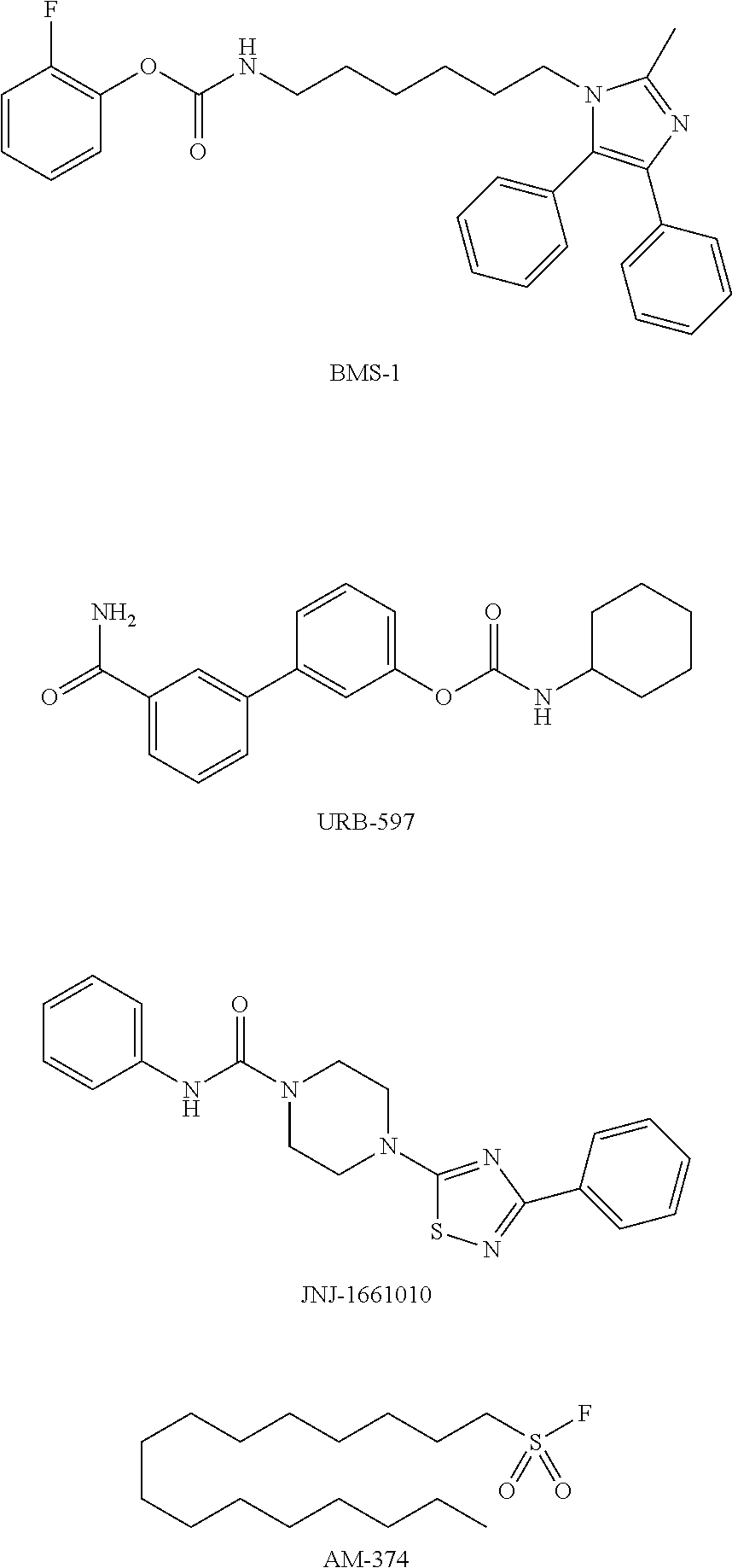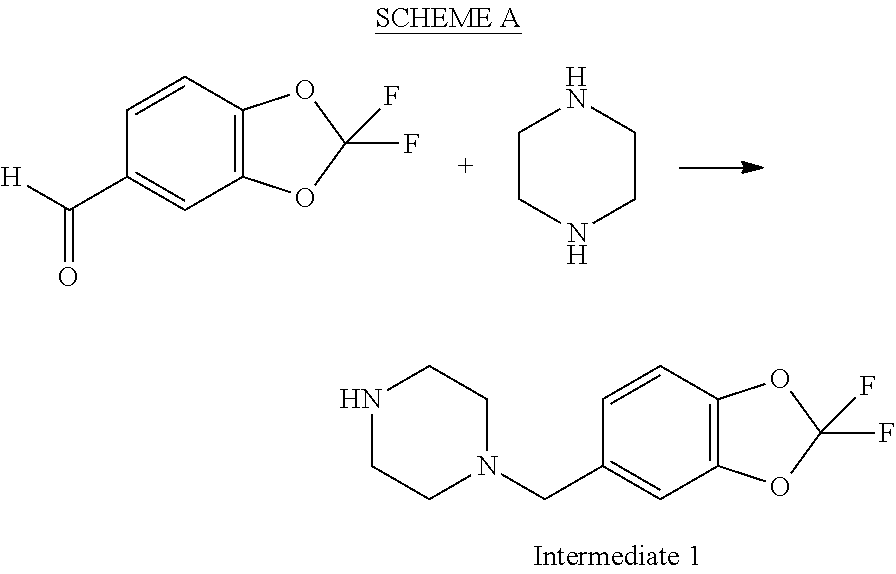Modulators of fatty acid amide hydrolase
a technology of fatty acid amide hydrolase and amide hydrolase, which is applied in the direction of drug compositions, immunological disorders, metabolism disorders, etc., can solve the problems of reduced bone mineral density (bmd), increased risk of bone fracture, etc., and achieves high cyp2d6 inhibition values, the effect of improving behavior and physiological function side effects
- Summary
- Abstract
- Description
- Claims
- Application Information
AI Technical Summary
Benefits of technology
Problems solved by technology
Method used
Image
Examples
example 1
4-(2,2-difluoro-benzo[1,3]dioxol-5-ylmethyl)-piperazine-1-carboxylic acid (4-chloro-pyridin-3-yl)-amide
[0072]
[0073]A 2 L, three-neck Morton flask equipped with a mechanical stirrer, thermocouple, and addition funnel under a nitrogen atmosphere was charged with 3-amino-4-chloropyridine (35.0 g, 272 mmol) and toluene (740 mL). The brown solution was cooled to 2° C. Pyridine (25.3 mL, 310 mmol) was added in one portion, followed by the dropwise addition of phenyl chloroformate (32.6 mL, 259 mmol) over 30 min. The maximum internal temperature was 5° C. After stirring at 2-5° C. for 7 h the reaction mixture became a thick yellow suspension. A cooled solution of K2CO3 (53.6 g, 388 mmol) in water (216 mL) was added over 3 min, during which the maximum internal temperature was 6° C. 1-(2,2-Difluoro-benzo[1,3]dioxol-5-ylmethyl)-piperazine (66.3 g, 259 mmol) was then added as a solid over 1 min. The mixture was allowed to warm slowly to room temperature and stirred for 15 h. Water (200 mL) wa...
example 1a
4-(2,2-difluoro-benzo[1,3]dioxol-5-ylmethyl)-piperazine-1-carboxylic acid (4-chloro-pyridin-3-yl)-amide, bis hydrochloride
[0076]
[0077]A solution consisting of 4-(2,2-difluoro-benzo[1,3]dioxol-5-ylmethyl)-piperazine-1-carboxylic acid (4-chloro-pyridin-3-yl)-amide (5.0 g, 12 mmol) and ethanol (200 mL) was treated with saturated aqueous HCl (3.0 mL, 3 equiv). The solvent was removed in vacuo, ethanol (100 mL) was added and the suspension was cooled to 0° C. and filtered. The resulting white solid was rinsed with cold ethanol (25 mL) and dried under vacuum to give 4-(2,2-difluoro-benzo[1,3]dioxol-5-ylmethyl)-piperazine-1-carboxylic acid (4-chloro-pyridin-3-yl)-amide bis-hydrochloride (4.25 g, 72%). 1H NMR (400 MHz, DMSO) δ 11.61 (br s, 1H), 8.98 (s, 1H), 8.65 (s, 1H), 8.37 (d, J=5.4 Hz, 1H), 7.78 (d, J=1.4 Hz, 1H), 7.69 (d, J=5.4 Hz, 1H), 7.52 (d, J=8.3 Hz, 1H), 7.46 (dd, J=8.3, 1.5 Hz, 1H), 4.39 (s, 2H), 4.28-4.12 (m, 2H), 3.49-3.26 (m, 4H), 3.03 (s, 2H).
Comparator Compound: 4-(2,2-Dif...
PUM
| Property | Measurement | Unit |
|---|---|---|
| Molar density | aaaaa | aaaaa |
| Molar density | aaaaa | aaaaa |
| Molar density | aaaaa | aaaaa |
Abstract
Description
Claims
Application Information
 Login to View More
Login to View More - R&D
- Intellectual Property
- Life Sciences
- Materials
- Tech Scout
- Unparalleled Data Quality
- Higher Quality Content
- 60% Fewer Hallucinations
Browse by: Latest US Patents, China's latest patents, Technical Efficacy Thesaurus, Application Domain, Technology Topic, Popular Technical Reports.
© 2025 PatSnap. All rights reserved.Legal|Privacy policy|Modern Slavery Act Transparency Statement|Sitemap|About US| Contact US: help@patsnap.com



